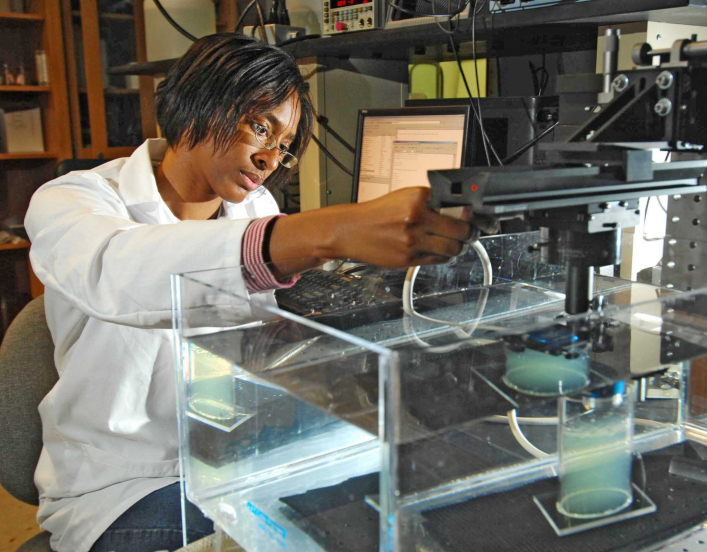How Employers Can Help Achieve Gender Equity in Tech
Creating a Culture of Inclusivity
For all their advances, women remain significantly underrepresented in the engineering and computing professions. What can employers do to increase the representation of women in these fields? AAUW partnered with Dell to give advocates and employers data-driven strategies and actionable steps to attract women into these fields.
SUPPORT A DIVERSE TALENT PIPELINE
The greatest challenge to gender equity in technology is to increase the number of girls interested in engineering and computing. Unlike past generations, girls in high school today are as likely as boys to take math and science courses, and female high school graduates are likely to have better grades in these courses than their male peers.
So while there is no difference in ability to tackle technical college majors, continued gendered stereotypes about abilities in technology steer girls away from choosing these as college majors. Researchers know that career choice begins in the middle school years and is influenced by parents, teachers, peers, and the media. Organizations can positively change the perception of the technology professions with intentional effort to influence parents, teachers, students and children in their communities. Larger organizations can influence the media portrayals of the technical professions.
BUILD EQUITY INTO YOUR RECRUITING DNA
Attracting and recruiting top female talent is a priority in many organizations. Researchers have shown using the right recruitment methods can help attract and successfully recruit more women for your organizations. These methods include include using neutral language in job postings, conducting blind interviews, using panels instead of one-on-one and having defined objectives and criteria to increase the number of women hired.
CREATE AND SUSTAIN A WINNING CULTURE FOR ALL
The culture of tech organizations is one of the main reason many women leave the engineering and computing professions. This is especially troubling as these women professionals have spent years preparing for the workplace and have overcome many barriers and biases in achieving their professional status.
The good news is that the culture of an organization is completely controlled by the leaders and the employees within it. Organizational change can occur with intentional effort: Senior leadership needs to prioritize gender equity. They need to define and measure specific goals that move them in that direction.
Finally, women in a tech company need professional development — as well as management that pays to any challenges or biases they may encounter — if the hope is for them to succeed and stay.
Playbook on Best Practices: Women in Tech
How Men Can Help
Because they make up the majority of workers and leaders in the technical organizations, men play important roles in creating the workplace climate and in recruiting and influencing prospective professionals.Here’s how male colleagues in tech and engineering companies can do their part:
- Seek opportunities to serve as a role model for girls and young women considering careers in computing, engineering, and tech.
- Become aware of the gender representation at every meeting, conference, and presentation. Refuse to participate on all-male conference panels or presentations.
- Encourage leaders or conference organizers to invite women to present, and encourage women to do so.
- Share with students at all levels how your job specifically works with and helps people.



